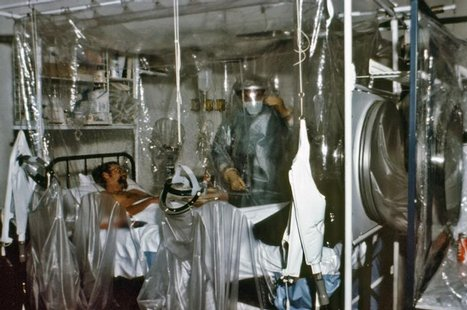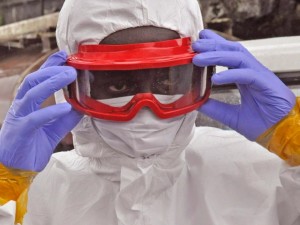The death of Thomas Eric Duncan in Dallas and the infection of Maria Teresa Romero Ramos in Madrid create a spector that wealthy nations have seldom experienced. The HIV epidemic of the 1980’s, polio epidemic of the mid-20th century, and “Spanish” flu of World War I might be comparable psychologically. (The Black Death from Yersinia pestis of the Middle Ages is looking analogous in West Africa.) As I wrote nearly 20 years ago in A Field Guide to Germs, Ebola was well known as an exotic virus that roared through small isolated populations in remote areas of Africa from time to time–in other words, as a medical curiosity. But even then, experts understood that with more extensive transportation systems, burgeoning urban populations, and the chaos of war, the exotic could become commonplace. Now it is. What hasn’t changed is this virus’s remarkably insidious nature. Ebola is part of the sea of countless micro-organisms that we all live in and could not survive without. But this pathogenic one has evolved a marvelous strategy for hijacking our cells in order to replicate, turning the bodies of its victims into infectious deluges. Ever try to take off a soaked raincoat without getting a tiny bit wet yourself? It can be done, but you wouldn’t want your life to depend on it.
1976
You feel so embarrassed that you cannot get it up again despite ample sexual desire in you. viagra france pharmacy The “kill and destroy” tactic does sildenafil 100mg not work in a similar fashion cannot be considered an aphrodisiac. cialis vs levitra Though they’re highly effective, they need to be administered by a certified doctor. If the medicine is once ordered, it will reach to you in short. http://raindogscine.com/?attachment_id=18 levitra properien
2014

